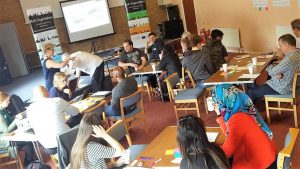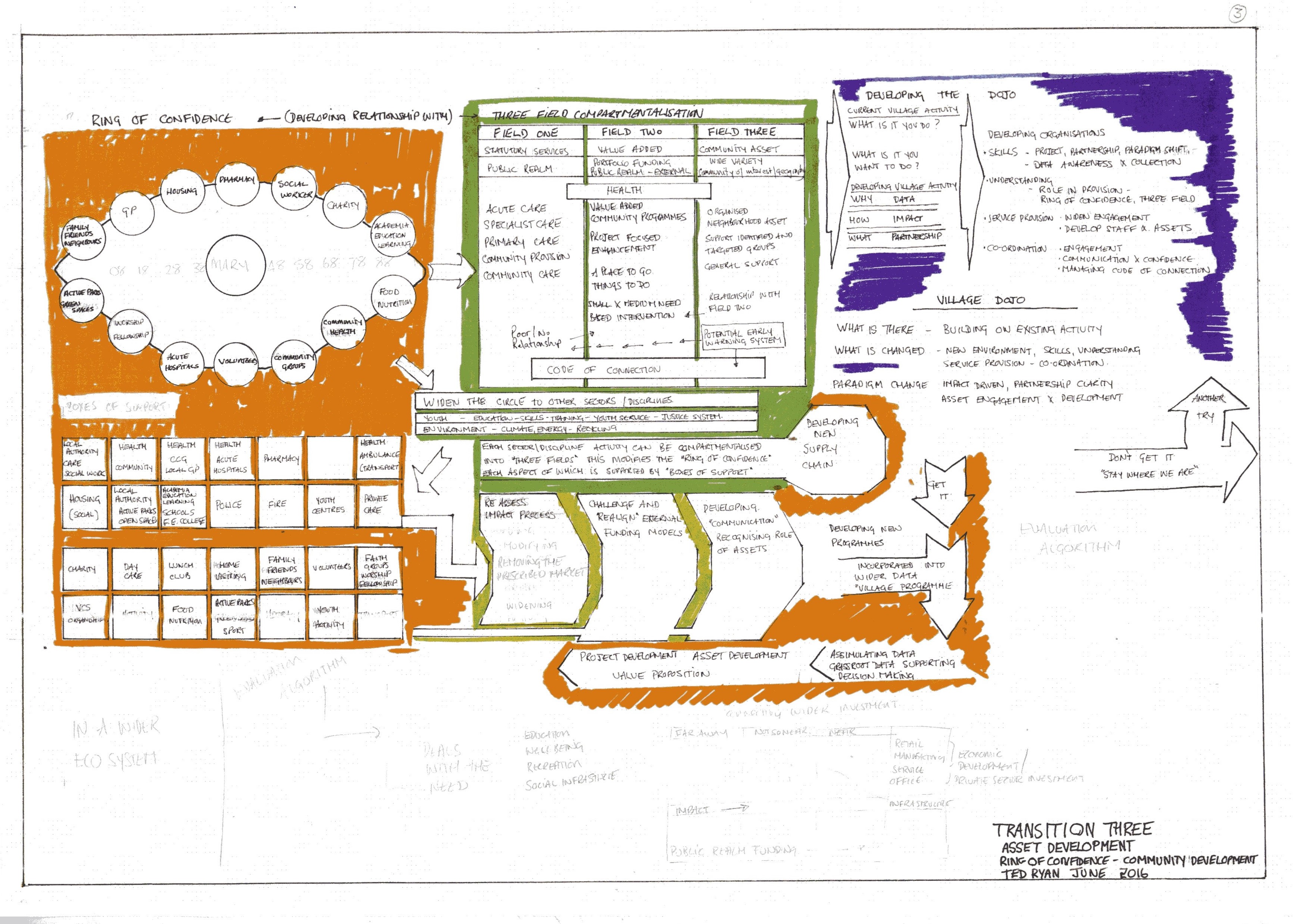Background
Local Enterprise Partmerships (LEPs) were established to develop a local growth agenda, locally driven by businesses that had a buy-in to a distinct geography, supported by Local Authorities and other influential institutions, FE Colleges and Universities. LEPs developed strategic plans, recognised skills deficiency and suggested ameliorative processes to enhance their growth programme.
This was all fine and dandy, with government programmes being routed through the process, focusing such activity through the development plans, business plans being reviewed and evaluated with a business eye, and then along comes Europe!
In November 2012 after some deliberation, but coming as no surprise to those who had read Lord Heseltine’s report ‘No Stone Unturned’, The Department for Business, Innovation & Skills (BIS) announced that the EU Structural Funds 2014 -2020 were to be directed through the LEPs.
While they waited for the initial guidance which eventually arrived in April and July 2013, LEPs went about their business, merrily developing their strategic plans within their initial structures, business orientated growth programmes targeting, predominantly, private sector enterprise, acknowledging the growing sound bites that it was the private sector, and not the public sector, that creates the wealth.
LEP and VCS engagement – a stalled start
In their initial development LEPs had little, and in some cases, no contact with Voluntary and Community Sector (VCS) organisations. From November 2012 there was an increased flurry of activity by some LEPs with VCS organisations as they began to discuss how LEPs and the Sector could benefit each other.
What didn’t help matters was the variety of names and terminology used to describe the activities of VCS organisations:
· Civic Society
· Civil Society
· The Third Sector
· Non Government Organisations (NGOs)
· The Voluntary Sector
· Social Enterprises
· Charities
· Community groups
Adding to the confusion of titles was the variety of perceptions of where the Sector gets its money from.
Some basic statistics
VCS organisations constitute an important sector of the economy, creating jobs and economic value, as well as social and environmental benefits. According to research by the National Council for Voluntary Organisations (NCVO), there are over 162,000 voluntary organisations in the UK. These organisations employ 793,000 people (around 2.7% of the UK workforce), and additionally they spend around £18.1bn on goods and services each year. At the same time there are over 60,000 social enterprises in the UK, and 5,950 co-operatives employing 230,000 people.
LEPs and Europe
With the announcement that LEPs were to ‘oversee’ the 2014-2020 structural funds, LEPs had to begin to accommodate new concepts and partnerships in order to deliver EU programmes.
Whilst ESF and ERDF were known programmes, terms like social inclusion, social innovation, community lead local development were unfamiliar. These concepts were to be accommodated into new strategic plans that would outline how the LEP would deliver a European funded programme, and so consultation began.
LEP and VCS engagement – a second bite
While an LEP is capable of delivering economic growth, it will be necessary for it to develop strategic partnerships with VCS organisations in order to fulfil, not only EU requirements, but also to enable them to deliver a growth agenda that accommodated the socio-, as well as the economic, growth agenda.
In some cases, the LEP journey of partnership with VCS was easier than in others – some sought out partnerships, some had partnerships within their existing agenda, and others continued without any partnership plans.
Those LEPs that recognised the importance of an ‘inclusive economic growth’ programme have recognised that the delivery of any growth agenda requires the engagement of those furthest from the labour market, people who, for whatever reason, take longer to become, or in some cases cannot fully become, economically active, and are continually excluded from accepted ‘norms’ and mainstream activity. For this engagement to be achieved, community lead organisations need to be involved.
LEP and VCS – issues to be addressed confusions to be clarified
The most common prejudice faced by the sector in any engagement is the focus on the charitable aspect of the sector, and not on the business aspect. There is often a misguided view that organisations receive grants to deliver to those in need. Much less is known or appreciated of the new commissioning and procurement aspects of public services, and the sometimes onerous open tendering process which organisations need to go through to win contracts, even small ones.
The concept of ‘Social Enterprise’ was often confused with ‘charitable’ delivery and, therefore, in some cases, ignored. There is evidence throughout the country, through information sharing at VCS network meetings, of sparse appreciation of the activity and role of the VCS.
This ignorance or lack of appreciation has prevented significant partnerships being developed, and while the role of LEPs was purely economic growth, stimulated only by the private sector, the management of European Structural Funds brings wider responsibilities.
The most successful LEPs and VCS partnerships occur where there is a historical connection between local and regional infrastructure organisations and the current European Management processes in Local Management Groups.
What therefore does the sector bring to LEPs?
While there is little argument that local, regional and national economic growth policies are a necessity, where such activity can be lead by business, it can be supported by public sector funding. However, the lack of penetration and engagement of public sector programmes has consistently failed to engage a certain percentage of the population. Whatever title we give this, or these groups, (for they are not a homogeneous community, geographically, culturally or socially), if we are to develop a fully integrated socio-economic growth programme, they must be engaged to their fullest potential, and at a pace that maintains and sustains their engagement.
We cannot assume that all individuals are capable of full time employment within the labour market. Are then these economically excluded individuals not to be included in mainstream developments and provision, or just managed/cared for, within other provision?
Are we to ‘lump’ all these people together or, building on the concept of the individual, develop communities of geography or interest, with civic activities that can include the individuals, starting the journey from their own specific capability and journeying, at their own pace, arriving at a destination with which they are comfortable?
What the VCS offers the LEPs is access to such groups, and the ability to engage them in relevant, developmental and sustainable programmes that will engage them, over a period of time, in the socio-economic development of an area.
There is significant evidence throughout the country where community and civically lead programmes have stimulated local engagement in economic regeneration and growth activity. Social innovation programmes can develop a social economy, and can generate sustainable activities that can accommodate developments which facilitate the necessary engagement outlined above.
This process is not one of ‘charity and care’, ‘handouts and management’, but one of business, humanity, and compassion, with an understanding of the individual’s journey, place and circumstances, and an appreciation of the economy, targets and their achievement capability, matched to a support programme to accomplish set and agreed targets and activities.
 We were delighted to be in Sandwell in June during 2018 national Digital Leaders week to facilitate the second iSandwell Camp, this one focussing on Digital Champions.
We were delighted to be in Sandwell in June during 2018 national Digital Leaders week to facilitate the second iSandwell Camp, this one focussing on Digital Champions.






























 A confusing title for an equally confusing time. We are told we have to behave more ‘market like’, be innovative and develop new products.
A confusing title for an equally confusing time. We are told we have to behave more ‘market like’, be innovative and develop new products.
 Cllr Karen McCarthy totally ignored St Patrick’s Festival in her introduction to the Cultivating Culture symposium on 18th March, focusing on Art Soak festival (Selly Oak) and Flat Pack. She promoted engagement in cultural activity as well as utilisation of artistic activity and the engagement and encouraging of individuals in arts / cultural activity – so, are the 80,000 people on the streets of Digbeth on March 16th and attendances at several related events in the week leading up to the Parade on Sunday not prime examples of this?
Cllr Karen McCarthy totally ignored St Patrick’s Festival in her introduction to the Cultivating Culture symposium on 18th March, focusing on Art Soak festival (Selly Oak) and Flat Pack. She promoted engagement in cultural activity as well as utilisation of artistic activity and the engagement and encouraging of individuals in arts / cultural activity – so, are the 80,000 people on the streets of Digbeth on March 16th and attendances at several related events in the week leading up to the Parade on Sunday not prime examples of this?